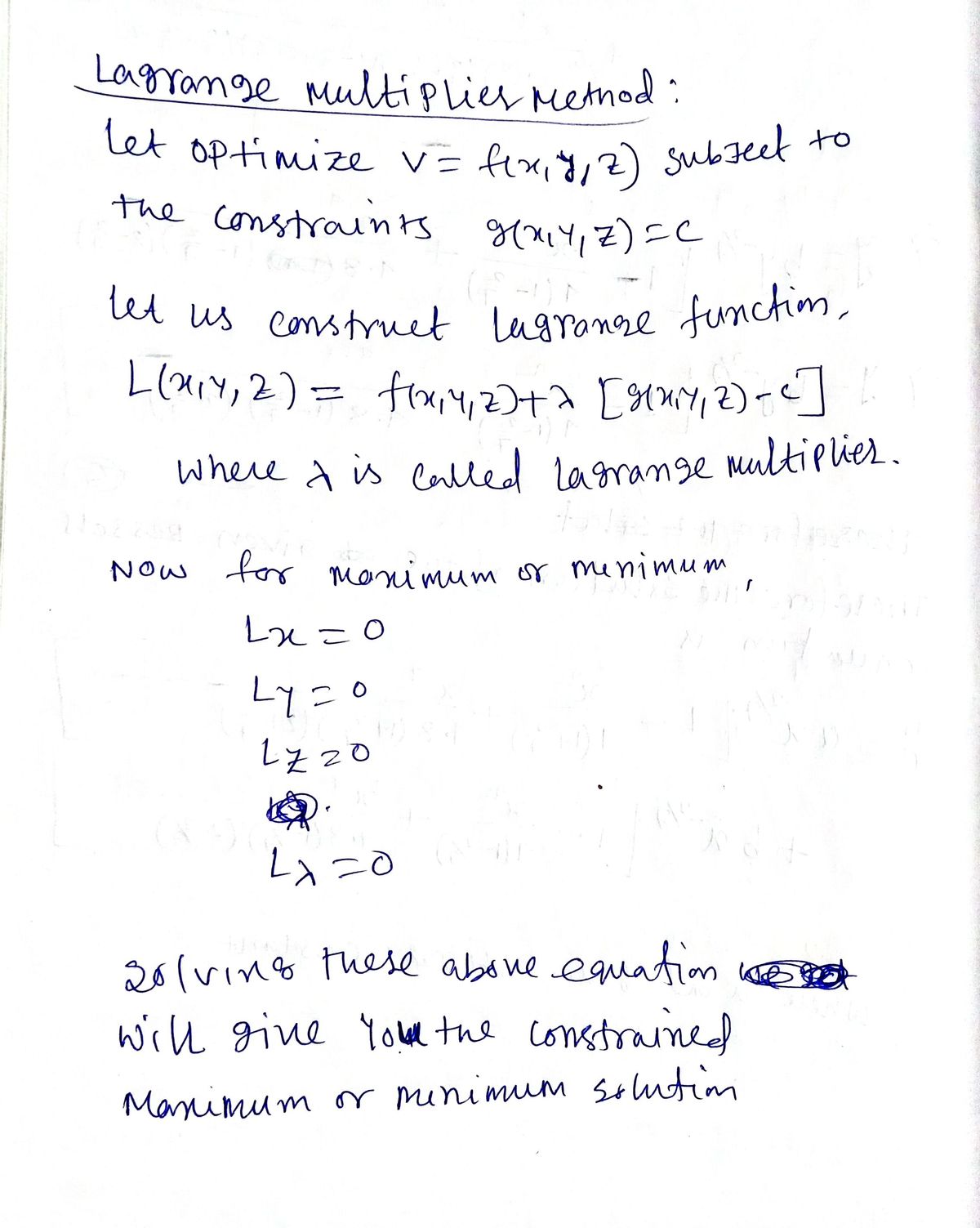1) Suppose you want to optimize the function V = (x - 1)2 + (y + 1)2 + (z-1)2, hold it restriction 4x + 3y + z = 2, using the Lagrange multipliers technique. If λ corresponds to the multiplier used when defining the Lagrange function, then one of the equations of the system to be solved corresponds to: A) 2 (y + 1) = λ B) z - 1 - λ = 0 C) 4x + 3y + z - 2 = 0 D) 2 (x - 1) = 3λ
Please reply as soon is posible, thanks!
1) Suppose you want to optimize the function V = (x - 1)2 + (y + 1)2 + (z-1)2, hold it restriction 4x + 3y + z = 2, using the Lagrange multipliers technique. If λ corresponds to the multiplier used when defining the Lagrange function, then one of the equations of the system to be solved
corresponds to:
A) 2 (y + 1) = λ
B) z - 1 - λ = 0
C) 4x + 3y + z - 2 = 0
D) 2 (x - 1) = 3λ
2) Suppose z is given implicitly by the equation x3y − yz2 +z/x = 4
in a neighborhood of the point P (1, −2), in which z = −2. The value of the directional derivative of z at P in the direction of the vector w = (−3, −4), corresponds to:
A) −24/7
B) 24/35
C) 24/7
D) −24/35
3) Consider the solid Q bounded by the surfaces
S1: x = 4 - z2
S2: x + y = 5
S3: x = 0
S4: y = 0
S5: z = 0
shown in the figure.
(See the Solid Q in the images)
When projecting Q onto the Y Z plane, two subregions are determined. One such subregion is composed of the points (y, z) such that:
A) 1 ≤ y ≤ 5, 0 ≤ z ≤ 1 + z2
B) 0 ≤ y ≤ 1 + z2, 0 ≤ z ≤ 2
C) 0 ≤ y ≤ 4 - z2, 0 ≤ z ≤ 2
D) 1 ≤ y ≤ 5, 0 ≤ z ≤√(4 - x)


Step by step
Solved in 2 steps with 2 images









